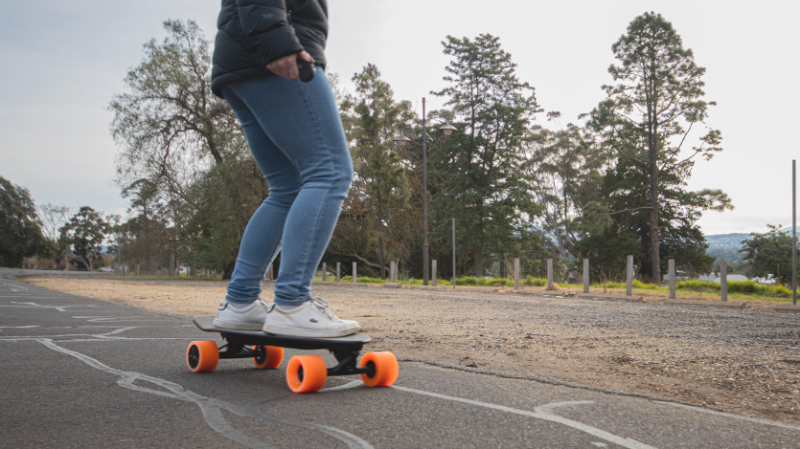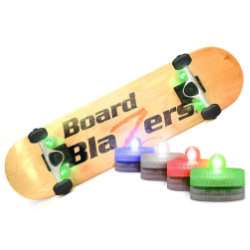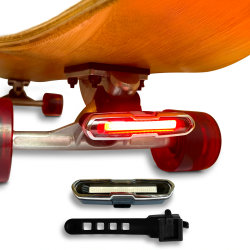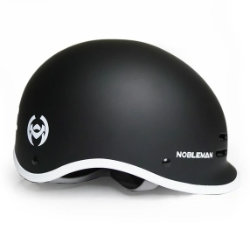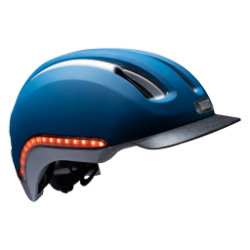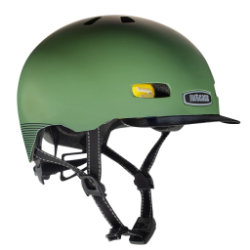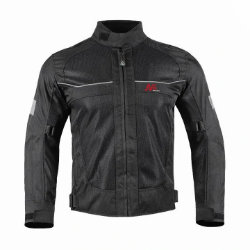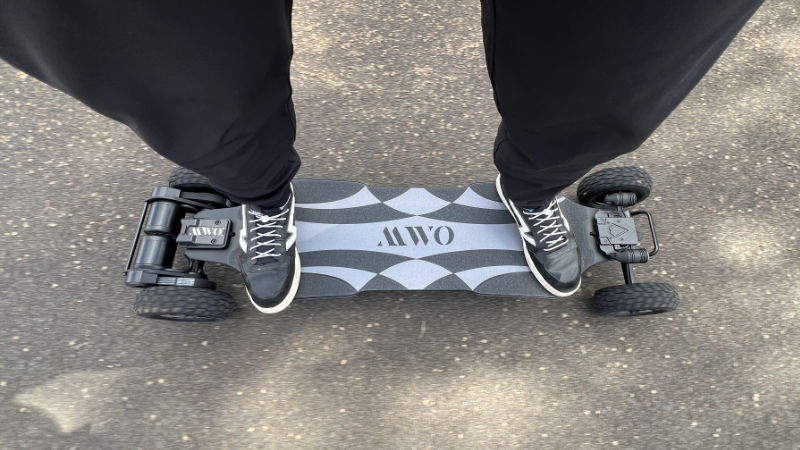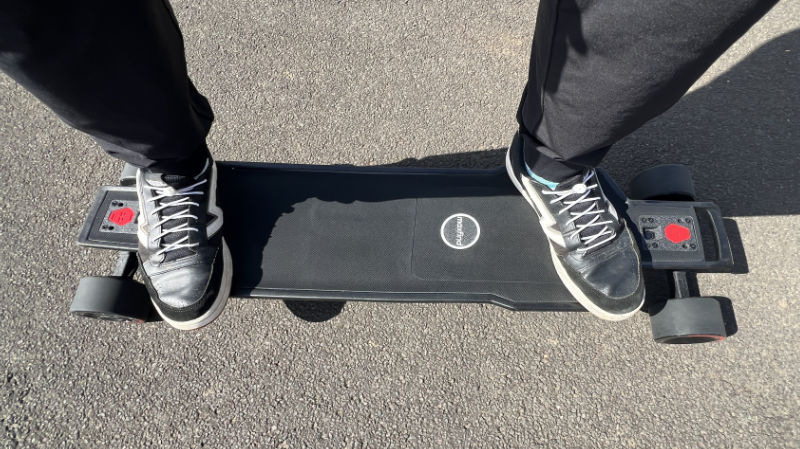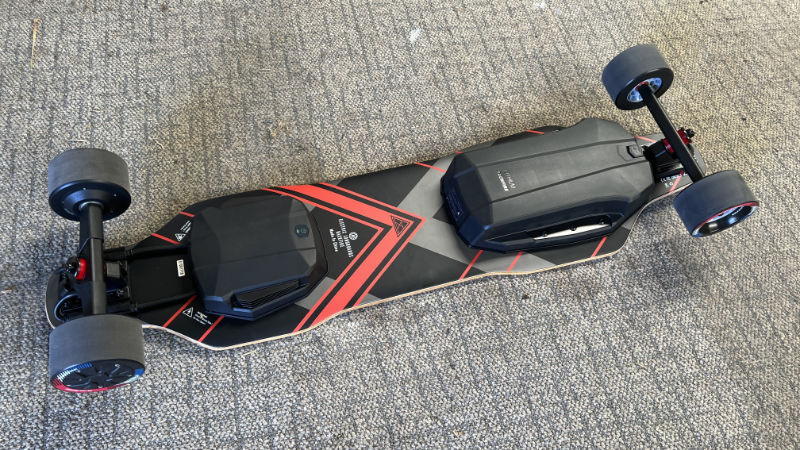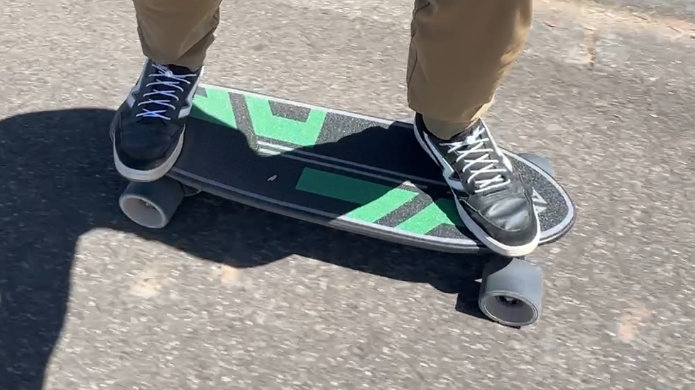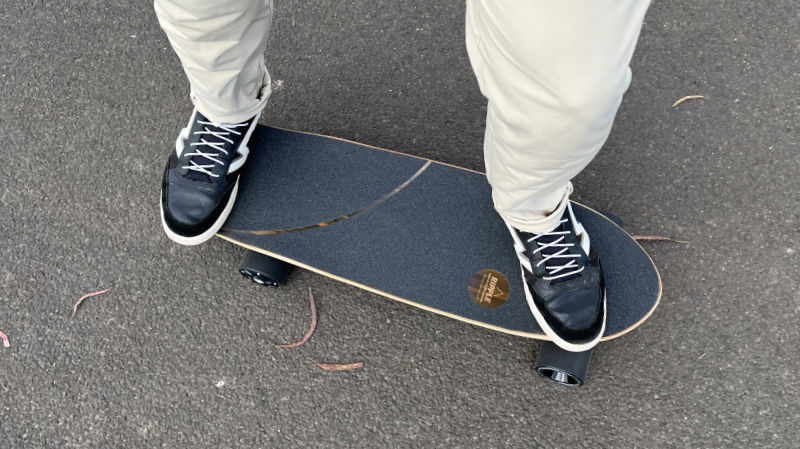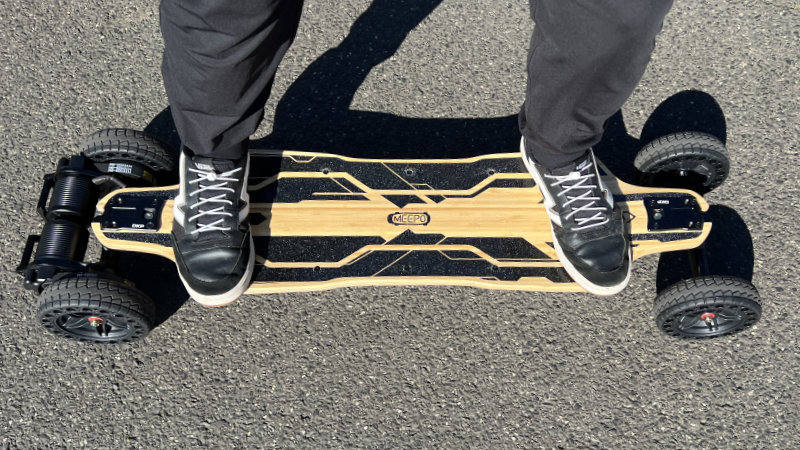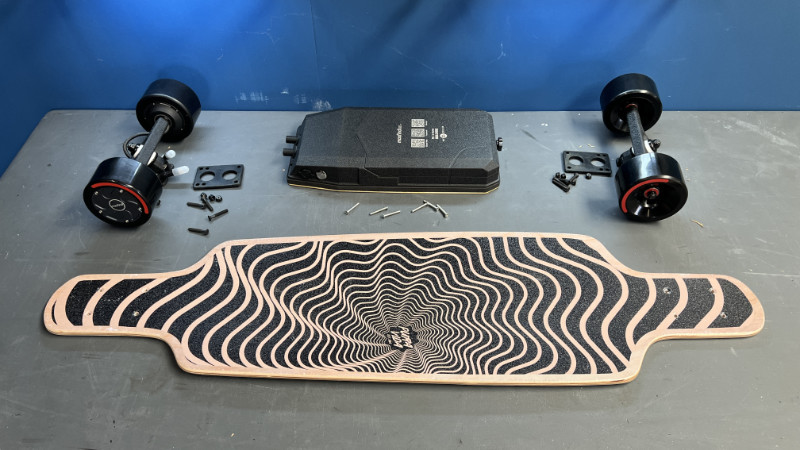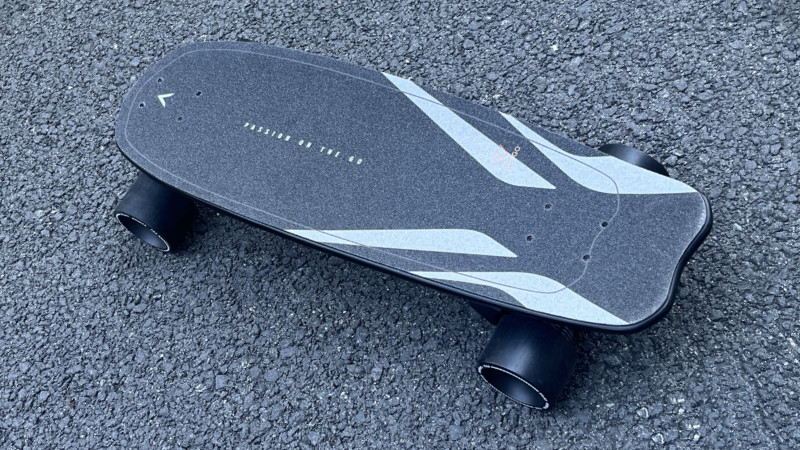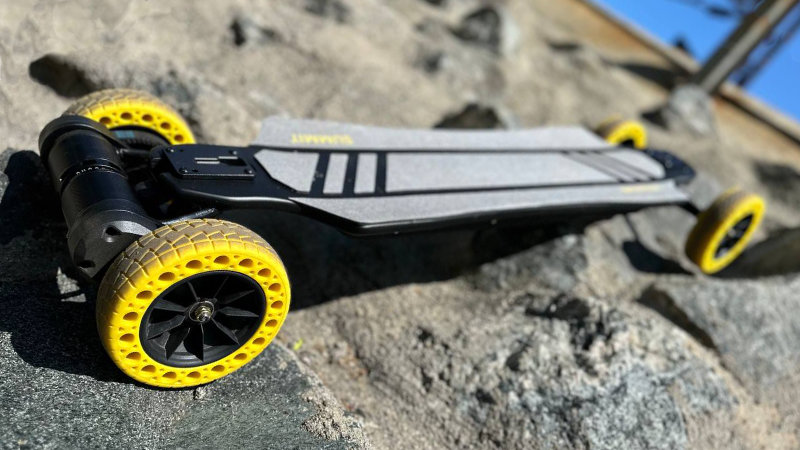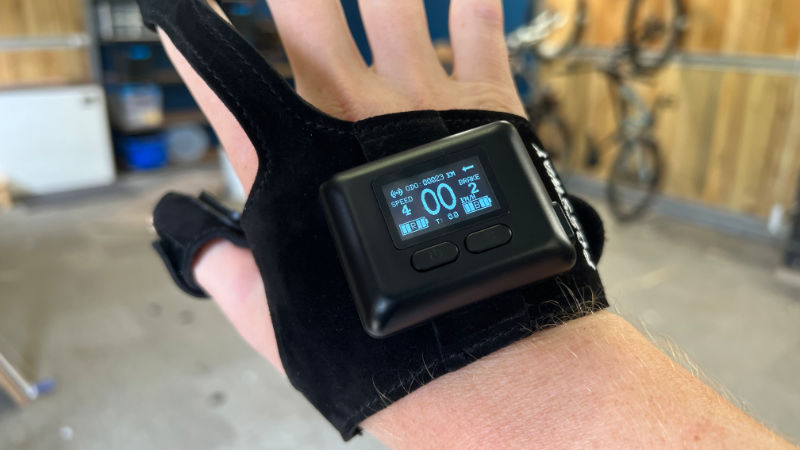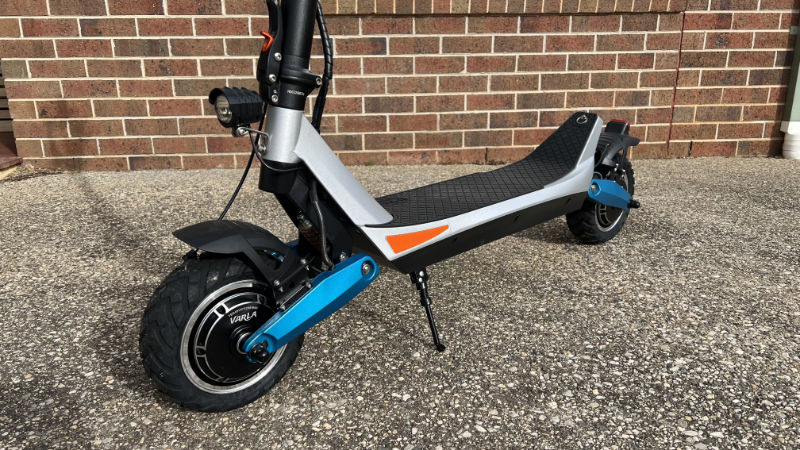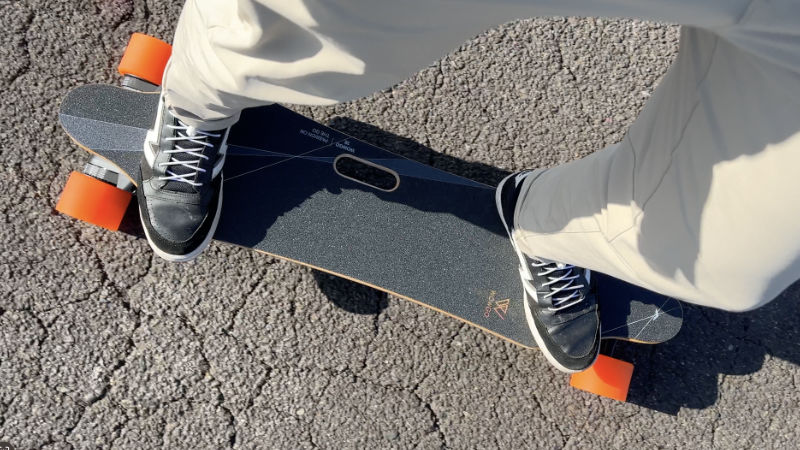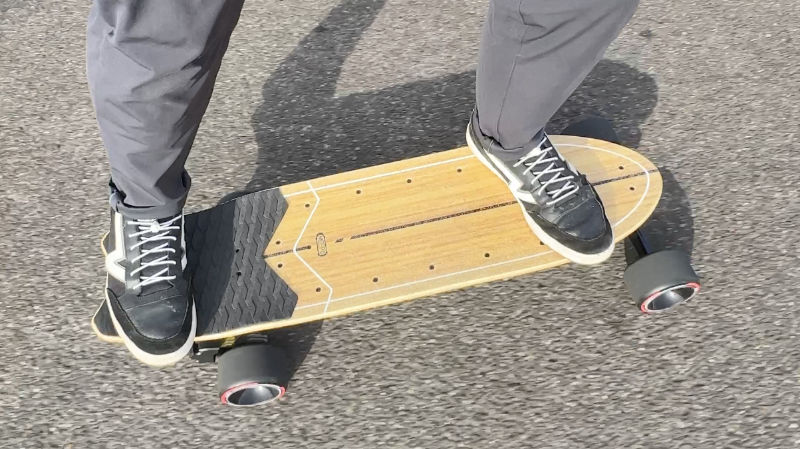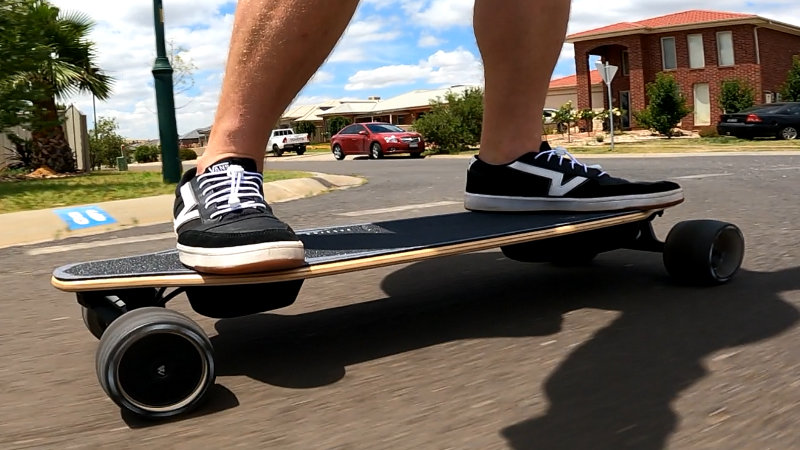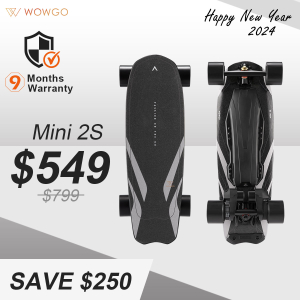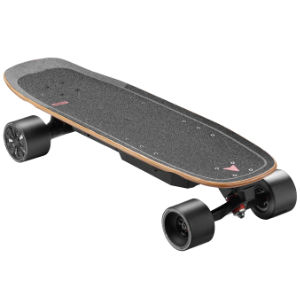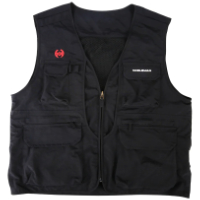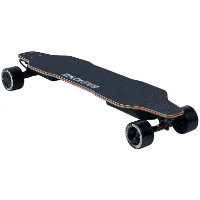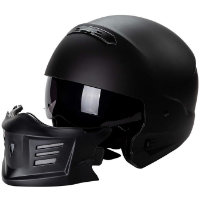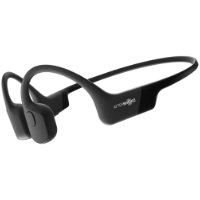Welcome to the crazy world of electric skateboarding.
We’re a community of ex-skaters, new-skaters, oldies, youngens, techies, surfers and snowboarders looking to get a carve on in the off-season.
This is the ultimate beginner guide for learning how to ride an electric skateboard.
You’ll want to read this guide if you’ve never stepped foot on any type of board before, it’s been some many years since your last skate, or if you’re an experienced surfer/snowboarder who wants to get in on the eSkate action.
For advanced riders, there are some really helpful tips towards the end of the article that will teach you how to ride fast while staying safe and how to do tricks on your electric skateboard.
There’s something for everyone, so let’s get into how to ride an electric skateboard.
Safety Gear
The first step of learning how to ride an electric skateboard, especially for beginners, is getting yourself some proper safety gear. To this day, I still wear all of the below protection when I ride.
You’re riding A LOT faster on electric skateboards than you would on a regular skateboard, and falling of at speeds of 30-50mph will do some serious damage if you come off.
Riding your electric skateboard safely needs to be your number one priority.
Shoes
It might be cool to see topless dudes skating along Venice beach in bare feet, surfboard underarm, but let me tell you, broken toes and skinless soles, isn’t worth it.
A good pair of skate shoes not only protects your feet if you come off, but they’ll provide a lot of grip on the board. This extra grip will help prevent falling and will give you a ton of confidence to rider faster.
Helmet
Unfortunately, this is a controversial topic, but I think it’s a no-brainer. If you choose not to wear a helmet, you’ll soon enough be a no-brainer.
These electric skateboards go fast. And if you have a spill, your falling speed will be faster than your reaction time to be able to stop yourself from falling.
I’ve hit my head falling off electric skateboards many times. And every time I have been so thankful to have been wearing a helmet, otherwise I would have ended up with some serious head injuries.
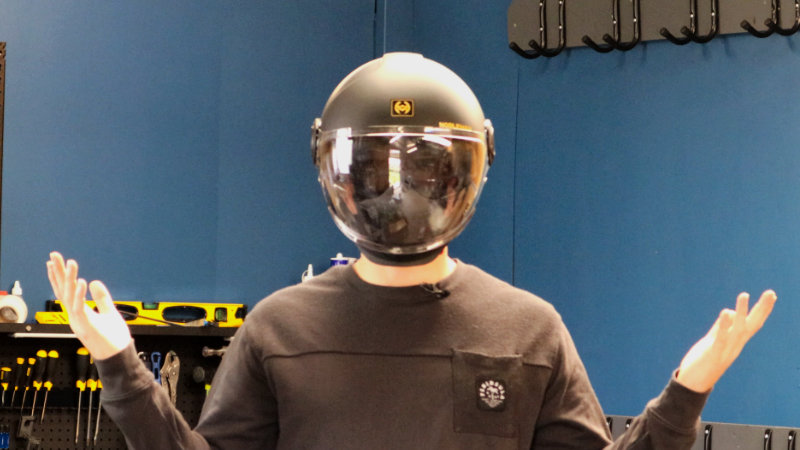
Knee & Elbow Pads
I put knee and elbow pads in the optional category, but still highly recommended. I could be bias because I’ve had a few falls. But I wore protective gear during those falls and I still had bruises and scratches that lasted weeks. If it weren’t for this protective gear, I’d have broken bones instead.
Pick The Right Electric Skateboard
Just like a pair of new shoes, if an electric skateboard doesn’t fit your personal needs, then you’re not going to have a very good time. And it’s just like a regular skateboard, what works for someone else, might not be suitable for you.You want to get an electric board that suits your height and riding style.
Taller riders will generally need a longer deck so they can have a comfortable stance. Or if you want to ride fast or travel long distances, you’ll also want an electric longboard. If you want an agile eBoard for inner-city streets, then a short electric board might be the way to go for you.
There are a lot of other factors to consider when choosing an electric skateboard that is right for you. More than we have space for here, so check out the section at the end of my Best Electric Skateboard article which has more info.
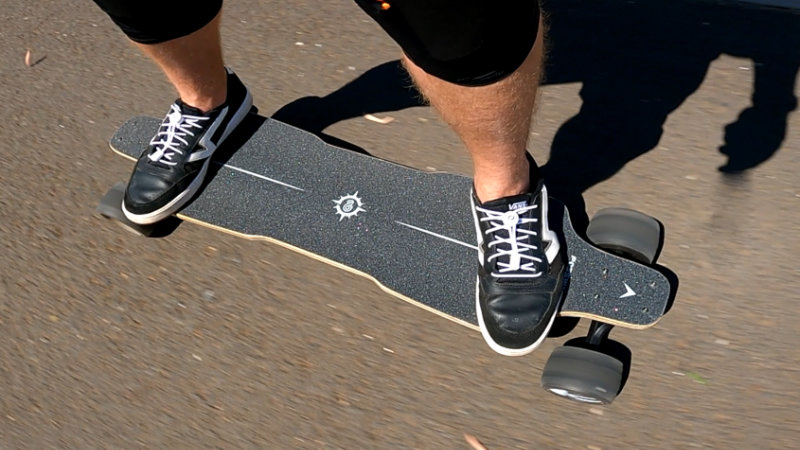
Which Way Does An Electric Skateboard Go?
This is a commonly overlooked question because on most regular skateboards you can ride them in any direction. On electric skateboards, the motors will spin one way to ride forwards, and in reverse to ride backwards. As a general rule, the motors are at the back of the electric skateboard.
But to be certain, before you get on the board (and I do this every time before I ride), just hit the throttle a tiny bit to see which direction the eBoard is going to move.

Familiarise Yourself With The Remote Control
Before setting off, turn your electric board upside down (so the wheels face the sky), grab your remote control and play around with the buttons.
Get familiar with what buttons do what. Common things your remote control can do is change speed modes, set cruise control and turn the board on and off. Also play around with the throttle to get a feel for how the motors will respond when you accelerate and brake in each speed mode.
Some remote controls have LED displays that show useful information while you’re ding. Things like battery levels for the board and remote, current speed, trip distance and speed more. Learn where these things are on the display so you only need to have a glance at your remote to get the info so you don’t need to take your eyes of the road for too long when riding.
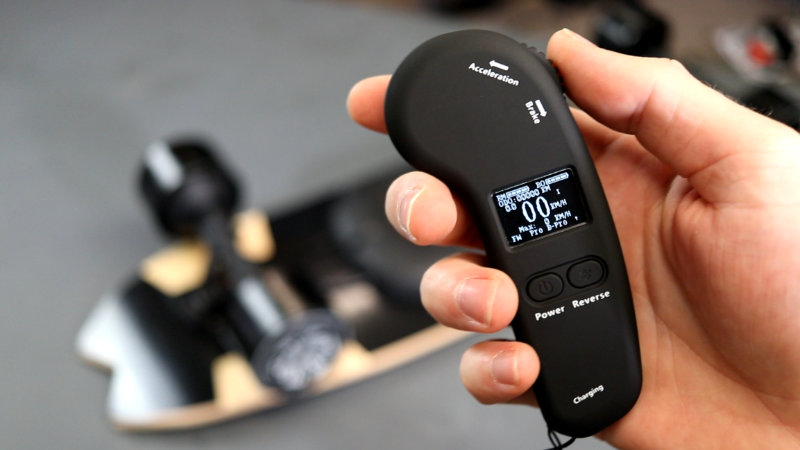
How Do You Turn On an Electric Skateboard?
Every electric longboard has a slightly different way of turning the board on and off. The most common way is a little button on one of the cases underneath the deck.
When you click the button, a light will turn on. Then you hold down the power button on the remote. The board and the remote will connect automatically. Give the acceleration a slight push to double check.
To turn it off, you just do the same thing, but in reverse. Hold the power button on the remote to turn it off, then press (or hold) the power button on the board.

Pick Your Settings
There are two types of initial setup you need to do before you start riding your electric skateboard:
Hardware Settings
The hardware settings are all of the configurations on your actual board. The main one is setting the tightness of your trucks. The looser they are, the more turning ability you’ll have but you’re more likely to get speed wobbles at higher speeds. The tighter your trucks, you’ll be safer at higher speeds, but it’ll be much harder to turn.
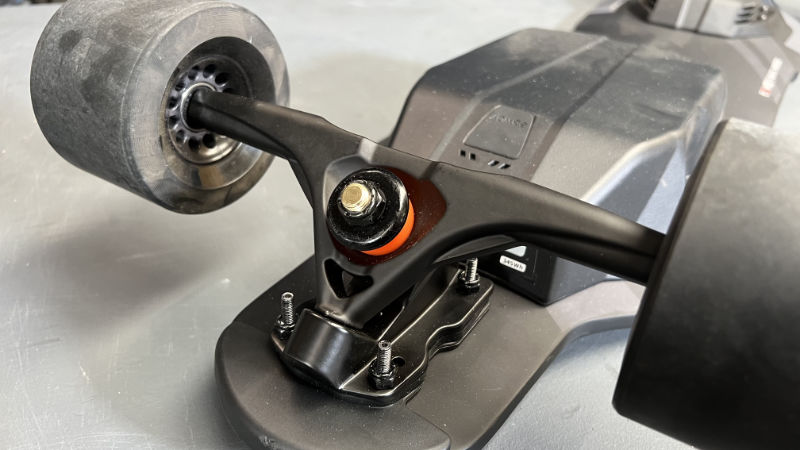
Remote Control Settings
I guess you could consider your remote settings as your software settings. Every electric skateboard is going to have different features.
Exway for example, have a lot of extra customisations available. While brands like WowGo have the bare minimum. Both of who make great electric skateboards.
The key thing you want to set is the speed mode. Start off in mode 1 (or Low), and gradually move up the modes as you become confident in each one.
Your Skateboard Stance
Your skateboard stance determines which foot will be your front foot and which will be your back foot. If you’re a snowboarder, this is likely to be the same as your snowboard stance. Same with surfers or wake boarders. If you’ve never done any board sports before, you might not know, so I have a good test you can do to figure it out.
Stand up straight and have someone lightly push you from behind. The foot you use to catch yourself is likely to be your front foot. Give that a go on the eBoard, and if you’re still not sure, try the other way and see which one feels more comfortable.
Regular Stance
You’re considered a ‘regular stance’ if you use your left foot forward. This will mean that you will predominantly use your left foot for turning and your right foot for bracing. I’m a left foot forward kind of guy.
Goofy Stance
You’re considered a ‘goofy stance’ if you prefer to ride with your right foot forward. So you’ll be using your right foot for turning and your left foot for bracing.


Foot Placement
Now that you know which foot is your front foot and which is your back, where do you put them? The deck of an electric skateboard generally has a wider space around where you will place your feet and it will get narrower towards the middle of the deck. Not always, but a good rule of thumb.
Let’s start with the back foot. I like to place my back foot with the trucks bolts about an inch from the outside of my foot. I also keep my back foot perpendicular to the deck.
With my front foot, I put it a similar distance from the front trucks and then I slightly open my front foot, turning my toes forwards so that my foot is on a slight angle, just off perpendicular.
This is going to be different for everyone, and depends on the shape of the deck. So play around with it and find what feels comfortable to you.
Your First Ride on an Electric Skateboard
Alright, I think we’re just about ready to go on your first electric skateboard ride. Let’s start off nice and easy.
Make sure the board is on a flat and smooth surface. You can hold the brakes on so that the wheels don’t roll around. Or you could use a wall to keep your balance. Step on to the deck and move your feet around until they are comfortable.
An important rule to remember is, when you’re accelerating, lean your body weight forward over your front foot. And when you’re braking lean backwards over your back foot. When you lean forward, you counteract some of the inertia you get from accelerating. The same goes for when you lean back when braking.
Make sure to have knees bent slightly, to lower your centre of gravity. As you’re leaning forward, slowly release the brakes then ease on the accelerator. You might feel a slight jolt as the motors engage, but this is normal on a lot of electric skateboards.
By now you’re probably creeping along. You’re doing it! You’re electric skateboarding! But before you get too excited, you need to learn how to brake.
Learning How To Brake
On a regular skateboard, you would generally use foot braking to slow yourself down. Wearing out your favourite pair of kicks in the process.
On most electric skateboards, you pull back on the thumbwheel to activate the brakes.
Remember to lean back when you do this to prevent yourself from being thrown forward.
Ease the brakes on gradually until you come to a complete stop.
Do this over and over again until you get a feel for the acceleration and braking power in each mode.
Learning How To Turn
Now that you can go up and down the street confidently, it’s time to learn how to make turns on your electric skateboard.
Because some people are goofy and some are regular, I’m not going to use the words left and right to signify the turning direction. Instead I’m going to say toe-side and heel-side.
For regulars, toe-side is turning right and heel-side is turning left.
For goofy riders, it’s the opposite. Toe-side is turning left and heel-side is turning right.
When you want to turn toe-side, lean your body weight over your toes and apply some pressure to the edge of the deck. To keep your centre of balance, you can bend your knees a little as you do this.
To turn heel-side, you lean over your heels and apply pressure to the outside edge of the deck.
For harder and faster turns, lean further over the desired side of the board.
It’s common for beginner eSkaters to try and turn by applying pressure to their toes while leaning over their heels. But this is a sure way to lose your balance quickly.
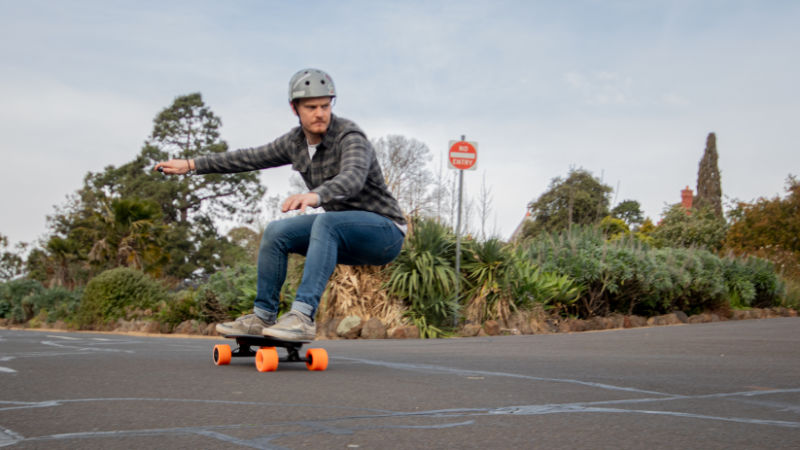
Learn How To Fall
They say there are two types of eSkaters. Those who have crashed, and those who will crash.
And there is some truth to it.
So, it’s very important that you learn how to fall safely to mitigate as many injuries as possible.
The first thing you’re going to want to do is stay relaxed. As weird as this sounds, if you hit the floor with arms tensed and straight out, you’re likely to break a bond from impact. You almost want to rag doll into the ground.
Next you’ll want to lean away from the fall. The major benefit of this is reducing the likelihood of your head hitting the ground and preventing head injuries.
You’ll want to try and land on a part of your body that will be able to absorb the impact of the fall. That’s areas like your thighs or upper arms. Avoid your joints.
If you’re wearing knee and elbow pads, you can use them to slide along the ground with. Sliding will reduce the amount of impact your body takes.
Practice. That’s right. You’re going to want to practice falling.
Ride along a strip of grass and dive off your electric longboard implementing the things you’ve learned here. People will definitely look at you funny, but the practice could very well save you a trip to the emergency room.
Practice
Learning to ride an electric skateboard can be challenging, however, once you have the foundations down, it can be very rewarding.
My advice to you is to just get out there and practice.
There’s no shame in taking the board out and riding up and down the street getting used to the acceleration, braking and turning.
A little practice goes a long way to boosting your confidence when you’re out on the roads and footpaths.
Advanced Electric Skateboarding Techniques
Kick Push
Kick pushing is the traditional method of propelling yourself forward on a regular skateboard.
You can use kick pushing on an electric longboard to get the board rolling before you start accelerating.
This is a great method to reduce the battery consumption and increase your range.
It’s also good to practice it, because one day you will run out of battery in the middle of nowhere and you’re going to have to kick push your way home.

Riding Fast On An Electric Skateboard
When you’re hitting max speeds on your electric skateboard, you are faced with a whole new level of challenges.
As a general rule, you’re going to be able to reach much higher speeds on an electric longboard compared to a shorter deck because you’ll have more stability.
For starters, the ground becomes exponentially harder the faster you go, that is to say, you’ll hid the deck harder.
Obstacles can come out of nowhere. I’ve had to dodge cars, bikes, dogs, kids, birds, snakes, cracks, sticks, rocks, you name it.
The faster you’re going, the less time you have to react to these obstacles, so you should always ride at a speed that you are confident you can brake at and that suits your environment.
There’s a special speed stance you can use to increase your stability and reduce speed wobbles.
It’s akin to the downhill skateboard stance where you lift the heel of your back foot up and place the ball of your foot in the centre of the deck.

Doing Tricks On An Electric Skateboard
I’m no master eSkater, but there are a bunch of cool tricks you can learn to do on your electric longboard with just a little bit of effort.
Some of the best tricks for beginners include:
Hippie Jump
Dancing
Boneless
ShoveIt
Early Grab
Ghost Ride Kickflip
Slides
Chinese Nollie
Harambe Flip
Old School Variable Flip
Ronnie, a veteran skater and eSkater goes through each of these eSkate tricks in his video below.
Conclusion
You’re now equipped with all of the information you need to learn how to ride an electric skateboard.
If you’re still nervous about it, that’s totally normal.
The best thing you can do is get out there and start taking small steps.
Practice stepping on and off the board. Do it 20 times, or until you feel confident.
Then accelerate a tiny bit and brake. Do that 20 times, until you’re ready to accelerate for longer, or faster.
Bit-by-bit, you’ll gain more confidence and experience.
Before you know it, you’ll be a pro eSkater in no time.
Now, it’s time to teach a friend how to ride an electric skateboard so you can cruise around together.


